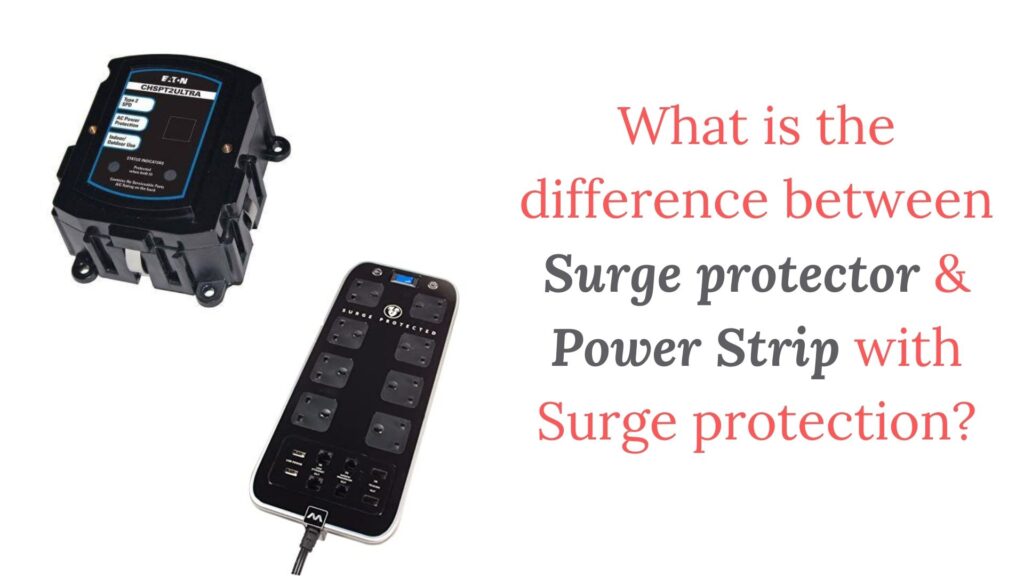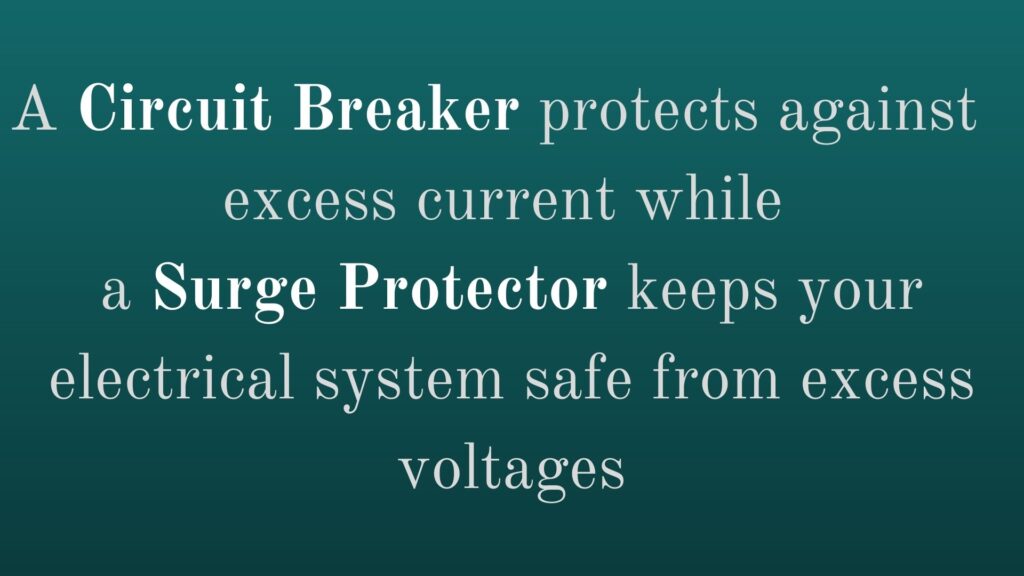
We have more electrical appliances in our homes than anytime in the history of mankind! Furthermore, we tend to use them for long periods of time and to some extent have developed a level of obsession with them.
According to Statista, home appliances sales in the US will amount to approximately 450 billion USD this year. That is a cluster of home gadgets right there.
Often, in most cases you find that you have more appliances than there are available wall outlets.
These wall outlets may not also be near enough to where you want to put in your microwave or home theater for example. This need has driven the popularity for power extension cords. In other terms, the modern versions are called power strips.
Modern power strips can handle the same amount of wattage as available from the wall outlet. They may have lots of available sockets, and even a convenient on/off switch. Some power strips also come with a built-in circuit breaker.
A wall power outlet may also have inbuilt surge protector which in turn provides surge protection to anything connected in the power strip.
A surge protector is actually a type of power strip, though some surge protectors only come with 1 outlet. The main purpose of the surge protector is to protect the plugged-in appliances from power surges. These power surges may let through too much excess voltage that it can lead to fried out electronics and damaged appliances.
A regular power strip is usually enough for most of our low-powered electrical appliances. These include electrical lamps, clocks, and other cheap electronics. A power surge may burn out these devices, but in most cases it’s not a financial hardship to replace them.
It’s the same with blenders, coffee makers, and microwave ovens. You can use them for a short time, and then just unplug them when you’re done. Since they’re not plugged in most of the time, you don’t risk them in case there’s a major power surge.
It’s a different matter when it comes to your more expensive appliances. A major surge can cause a huge amount of excess voltage to run through your electrical system and directly affect your plugged-in appliances.
In fact, damage can result even when the appliances are turned off, but are still plugged in.

It’s for that reason you really need surge protection for your home. Major surges (such as those caused by lightning storms) can damage your fridge and oven, home desktop computers, huge widescreen TVs, and gaming consoles.
Surge protection doesn’t really cost much, especially when compared to the huge cost of replacing a TV or a refrigerator.
Quick Navigation in this Resource
Power Strip with Circuit Breaker vs Surge Protector
A circuit breaker is basically a resettable fuse. Your home probably has a circuit breaker, which you can turn on when power suddenly goes out. The circuit breaker basically cuts off the power when it detects too many amps used.
A power strip with a circuit breaker works the same way. The automatic shutoff is there to protect against a fire starting when you draw too electric current beyond the ratings.
For instance, let’s assume your power strip is rated for 13A and you plug in your iron box and other items that go beyond the 13A. The power strip circuit detects this excess loads and trips the circuit to protect the circuit from damage.

But it doesn’t protect against power surges, which denotes a sudden spike in voltage (the level of electrical power). For these power surges, you need a surge protector.
Grounded Power Strip vs Surge Protector
There’s a definite difference between them, although many surge protectors also make sure that your electrical devices are properly grounded.
Essentially, when you have a grounded power strip, it means you’re less likely to get electrocuted when you handle the power strip or your electrical appliances. It’s protecting you. The surge protector, on the other hand, protects your appliances from damage.
Power Conditioner vs Surge Protector
A power conditioner may be even more advanced than a surge protector. It does what a surge protector does, meaning it protects the appliances from power surges.
But a power conditioner can level the voltage better, so that even tiny levels of excess voltage won’t get through to sensitive electronics.
A power conditioner is best for such sensitive equipment, such as expensive home theater systems or your all important gaming station!
FAQs
Can you simply plug in your devices in all the sockets of the power strip?
You can do this, but you cannot exceed the wall outlet maximum wattage. Just because you now have 8 extra sockets doesn’t mean you can just safely plug in high-wattage appliances such as floor heaters and air conditioners into the power strip.
If you exceed the wattage that the power strip can safely handle, then you may end up with electrical failure or overheating. Even an electrical fire is possible!
What causes a power surge?
That depends on whether it’s only a minor surge, or a major surge with more excess voltage involved. Minor surges happen frequently, and it’s not uncommon for a home to go through a dozen of those small surges each day.
A major surge doesn’t occur as frequently, and usually it occurs only during a thunderstorm. Lightning that strikes close to your home, or a downed power line, can lead to major power surges in the area.
Should you use a UPS instead?
A UPS is an uninterrupted power supply, and its function is quite different. Sure, in many cases a UPS can also protect against a power surge. But it has a backup battery, and its main function is to provide you with extra minutes of power when a power outage occurs.
A UPS is terrific for your computer, as you still have power to save your documents when a power outage occurs.
That way, you don’t have to redo the work you’ve been doing. You also get enough time to log out from your Windows OS properly, and turn off the PC.
Conclusion
When you’re buying either a power strip or a surge protector, it’s very easy to tell which is which by checking the packaging. Surge protection packaging tends to use words such as “surge protection” or “suppressor”.
If it says merely “power strip”, then it’s not a surge protector.
You should also check the joule energy rating. If there’s a joule energy rating that can range from less than 2,000 up to more than 4,000 joules, then it’s definitely a surge protector or suppressor.
It’s possible that you may have stored your power strips and surge protectors together, but a quick look at the devices can also let you tell the difference quickly.
In general, the surge protectors feature the word “protection” or “protected” on the device. There’s also usually a light near that “protected” label that lights up when you plug in the surge protector and turn it on.
Pingback: Surge Protective Receptacles | Haven Home Tech